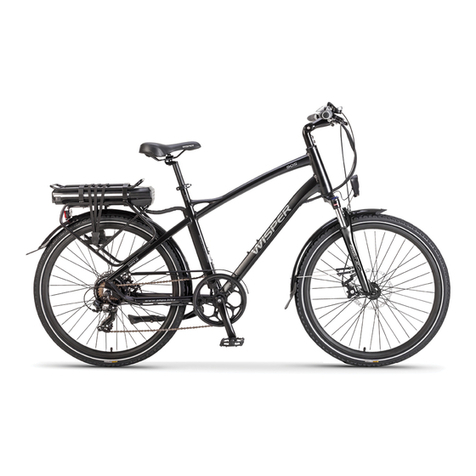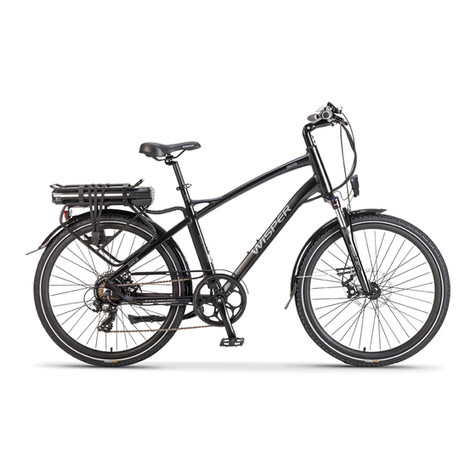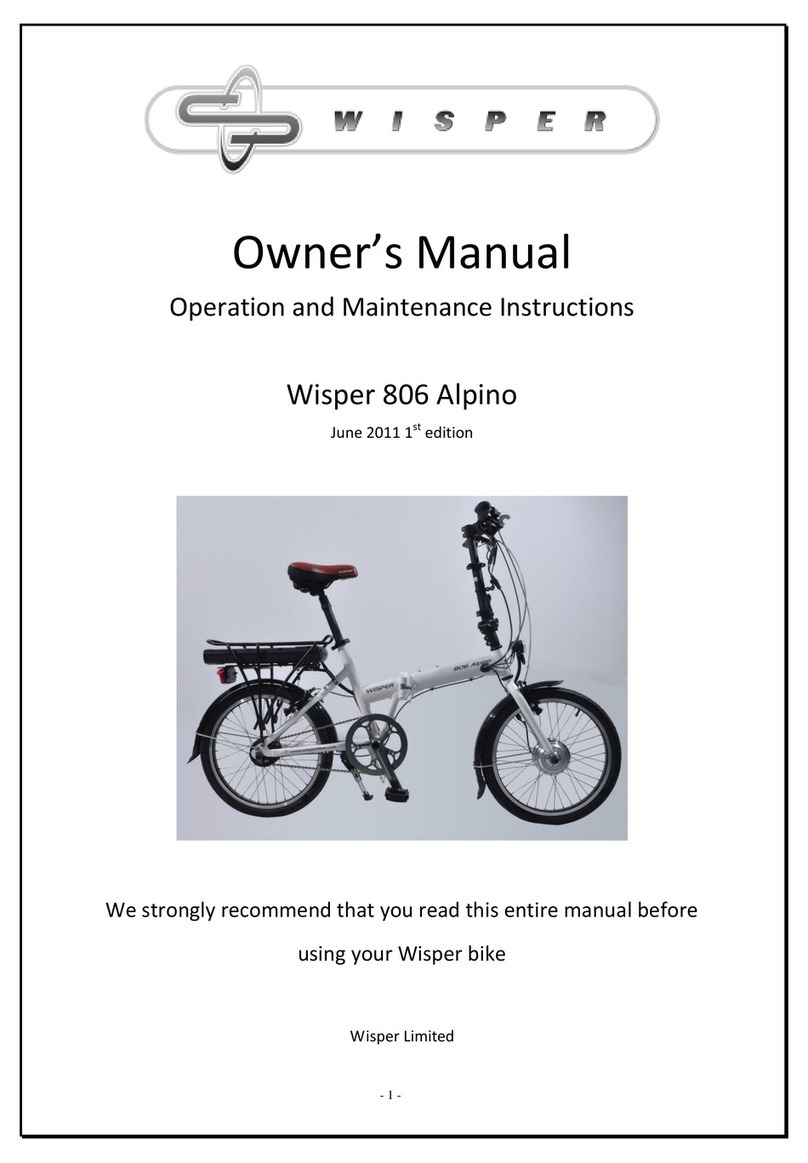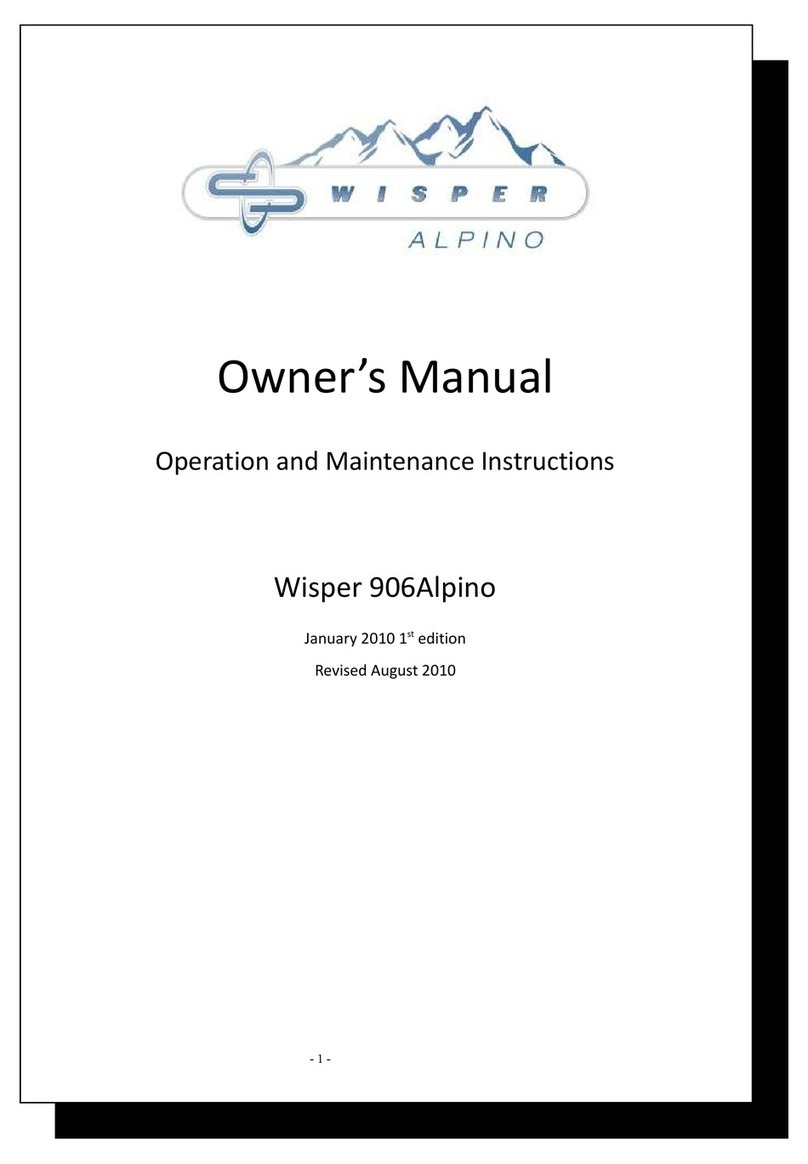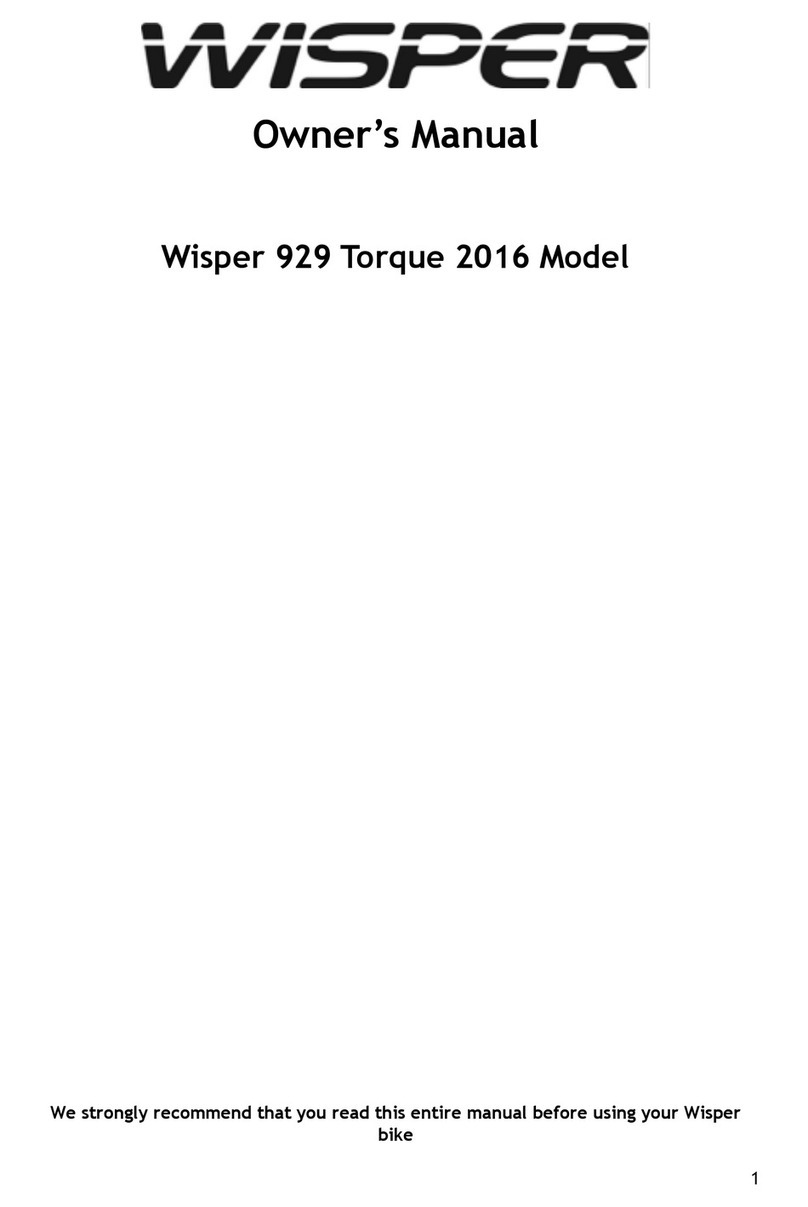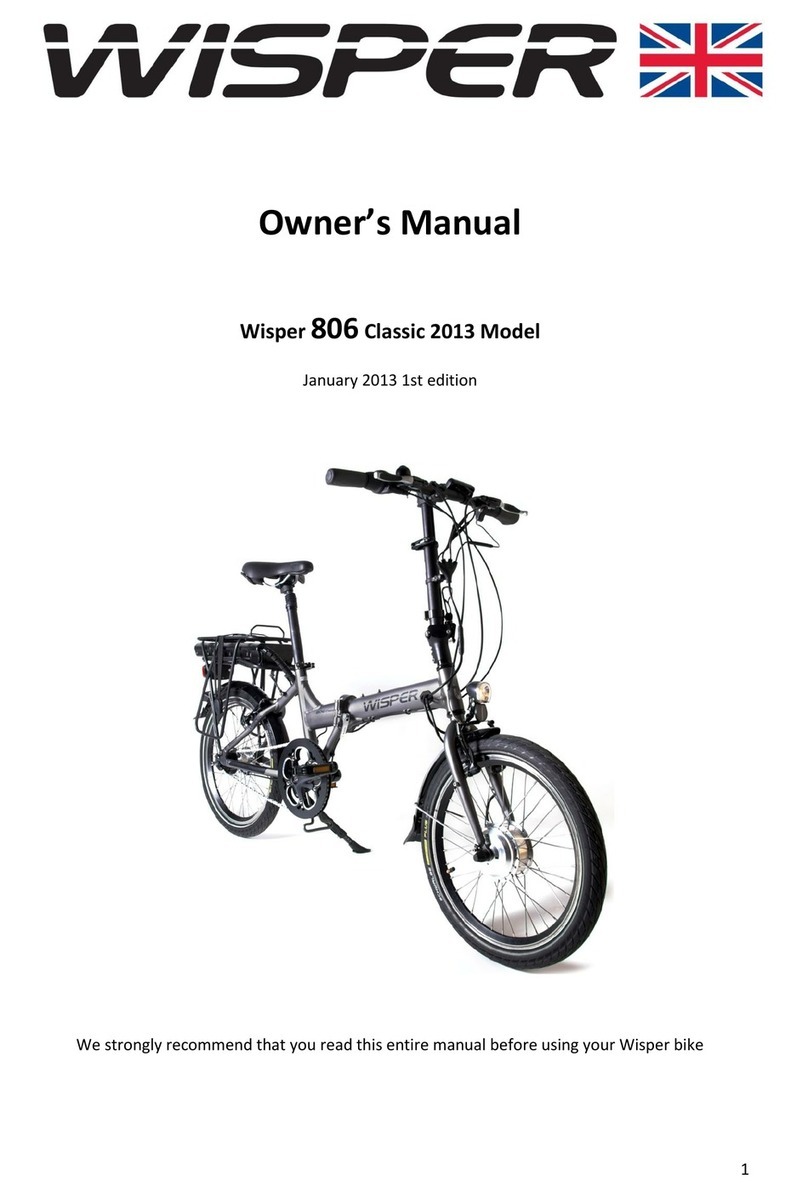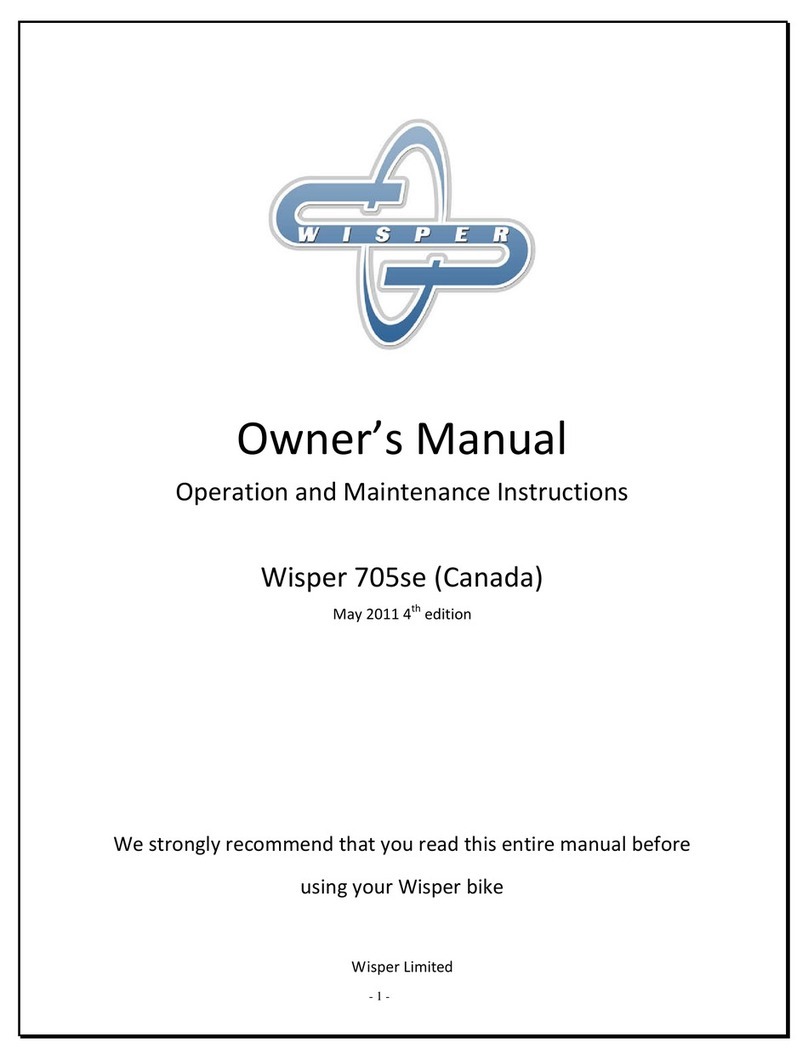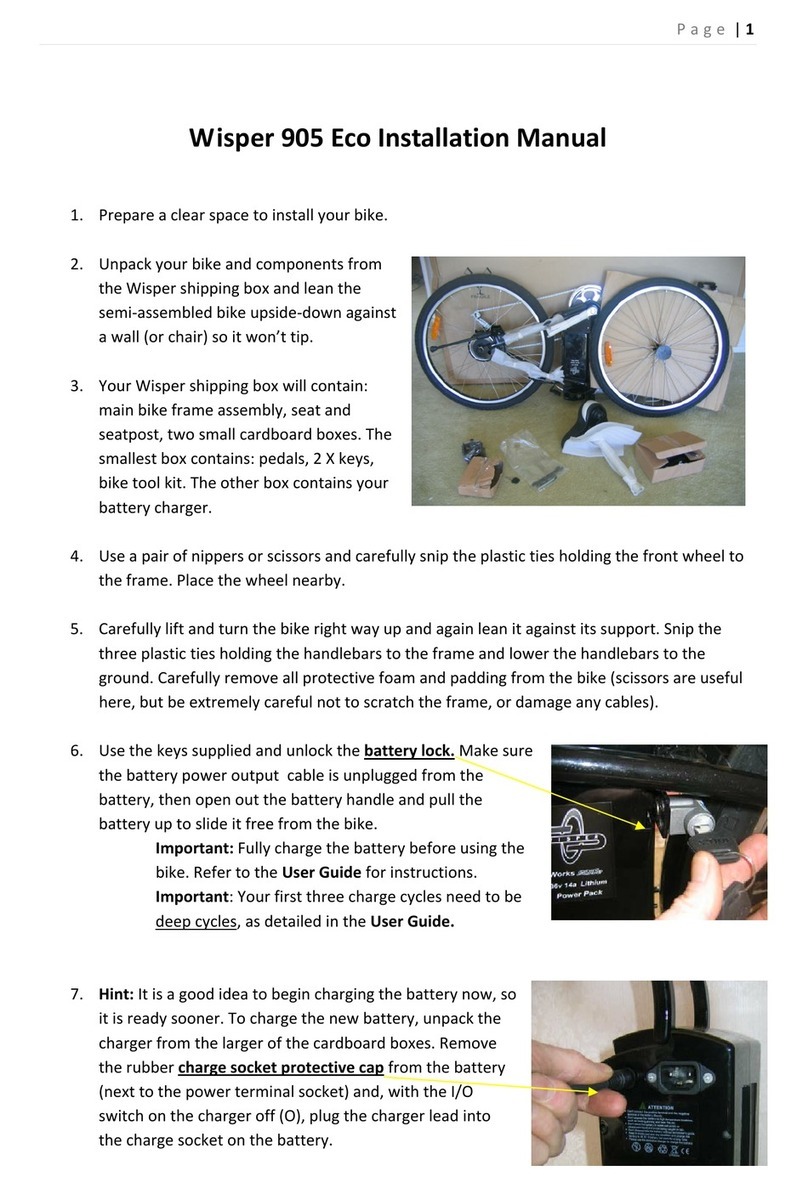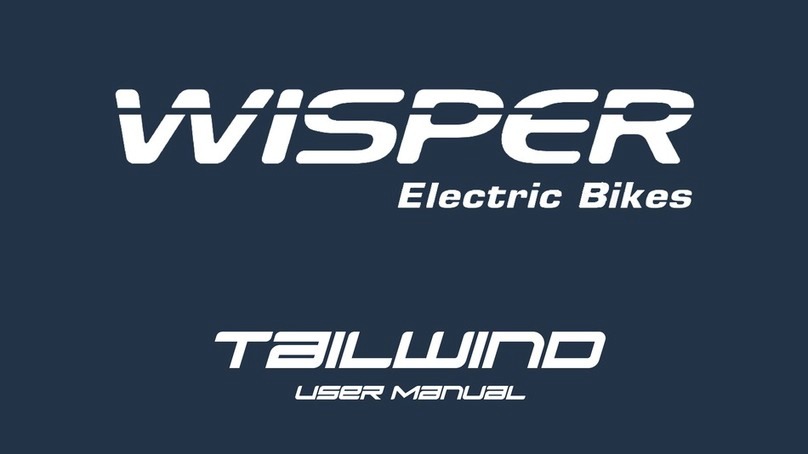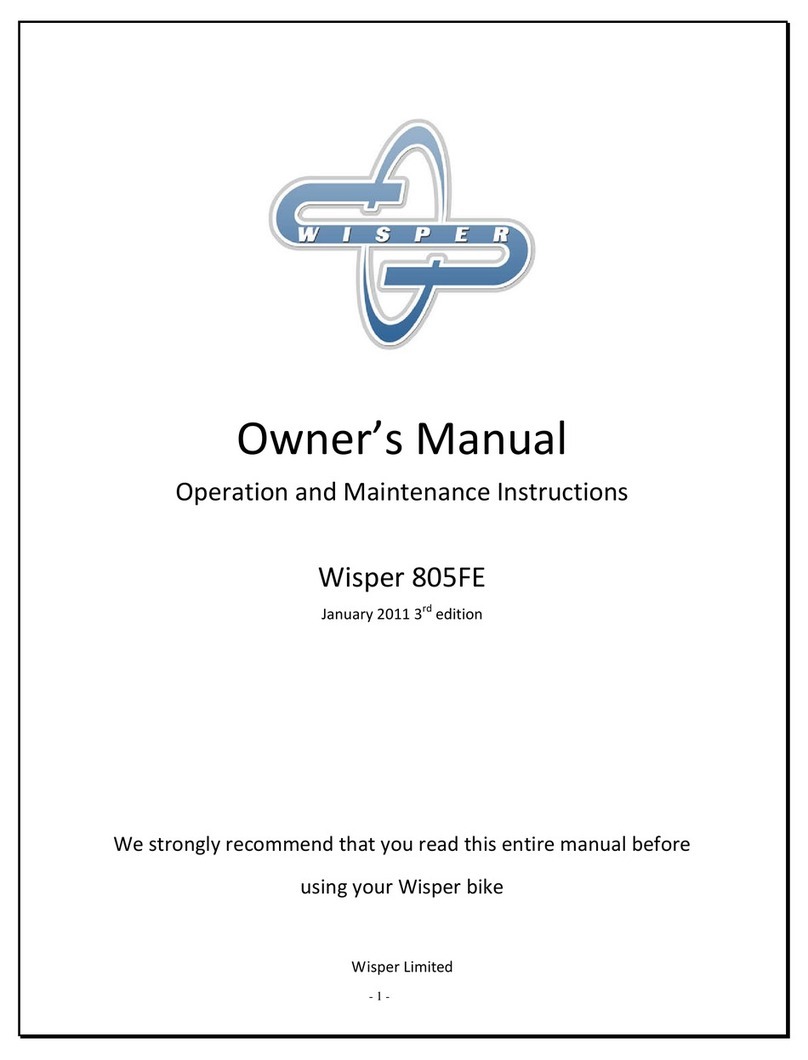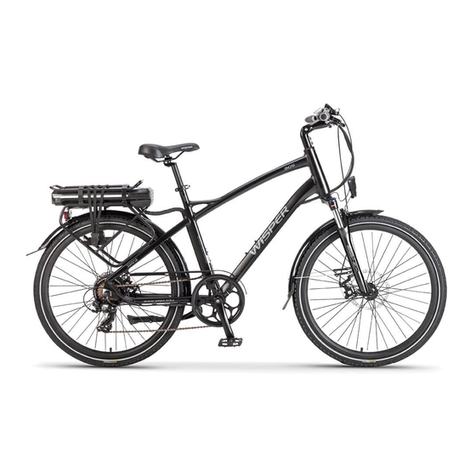
- 10 -
Part 2 Controls and Equipment
In this section we will describe the functions and any specific maintenance needed on all
the main controls and ancillary equipment.
9 Battery on off and battery lock
9.1 Your Wisper bike has one key. The key turns the battery
on/off and locks the battery in the bike. Please keep a
careful note of the key numbers as we cannot replace
them without these numbers should they become
mislaid.
9.2 The battery is connected to the electrical system of the
bike automatically when you slide the battery into the
frame. To turn on the bike’s electrical system, turn the
key in the battery clockwise, to turn off the power turn
the key anti clockwise.
9.3 When the battery has been turned on the bike is now ready for use. The
ON/OFF button on the handle bar isolates the power from the bike, when the
bike is “on” you will see the battery power lights illuminate above the capacity
indicator. When the ON/OFF button is pushed and the lights go out you have
turned the bike “off”. When the bike is “off” you will not get any assistance from
the battery and motor and the bike is effectively simply an unpowered push
bike.
9.4 To lock the battery into the bike frame turn the key clockwise the locking bolt
holds in the frame, if you want to turn the battery power on, turn clockwise
again, if you want to unlock press the key in and turn the key anti clockwise fully
while the key at lock position (Refer to the picture). Please read section 3 and 4
for battery care and advice on charging at the beginning of this manual.
9.5 The battery can be charged either on or off the bike.
9.6 To remove the battery turn off the power by turning the key to position
“Unlocking”, and remove the seat post and saddle. Using the handle on top of
the battery lift out the battery.
9.7 To replace the battery reverse the procedure for removing it.
9.8 Check there is no excessive movement of the battery when riding the bike. If
movement is found adjust the position of the small L shaped bracket locating
the top of the battery guide rail to the frame until the excessive movement is
eliminated. This is done by slackening the two adjusting screws located beneath
the frame brace at the front luggage rack mount and moving the bracket
forward. Retighten the screws securely. See picture below. (caution –do not
remove all clearance as it will be difficult to remove the battery if this is done).
view from below
of bracket and
screws
